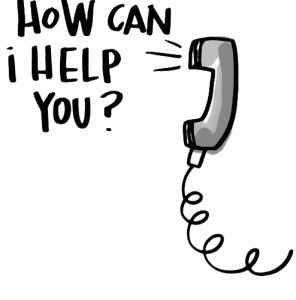 I’m beginning to think that 2012 is the year of the customer. We’ve seen a huge increase in customer experience initiatives coming out of the financial services and insurance industry this year. As we’re working with these companies to help them through this journey, you can almost forget that you are a consumer yourself! Now typically, I’m a quiet consumer – I don’t complain much, even if I’m not happy with something. But all this focus on driving “positive and relevant customer interactions” made me want to test the system.
I’m beginning to think that 2012 is the year of the customer. We’ve seen a huge increase in customer experience initiatives coming out of the financial services and insurance industry this year. As we’re working with these companies to help them through this journey, you can almost forget that you are a consumer yourself! Now typically, I’m a quiet consumer – I don’t complain much, even if I’m not happy with something. But all this focus on driving “positive and relevant customer interactions” made me want to test the system.
My first story involves two companies, a large retailer and a large manufacturer (who is also a retailer). I had been ordering the manufacturer’s goods (dinnerware, in this case) from the retailer and had placed several large orders. Several items in each shipment had significant manufacturer defects or were damaged in shipping.
I contacted the retailer over the phone and arranged for a reshipment of the products, and returned the defective items to my local store. A little bit of a hassle, but the customer service representatives on the phone and in the store were great. However, after several rounds of defects, I began to suspect that the retailer was selling second quality goods at first quality prices. So I did two things:
- Sent an e-mail to the manufacturer to ask them if the retailer was selling poor quality items deliberately.
- Posted a comment to the retailer’s “give us feedback about your recent purchase” Web site, which links the comment directly to the item for other prospective buyers to see.
The good news is that I didn’t have to wait long for a response! The manufacturer forwarded my e-mail to their quality control department. The manager of that department apologized for the poor quality, said it was their fault and that they would look into their quality control processes. The retailer’s customer service department sent me a personal follow up e-mail and apologized for my experience, and highlighted their generous return policy. I responded to the retailer and told them that the manufacturer said it was their fault, and that I did appreciate the retailer’s return policy. The rep wrote back again and said that in the future, they could arrange for a delivery to pick up damaged items directly from my house.
I was impressed by the quick and personal response from both organizations. My only hope is that the two of them share this information so that the retailer can more consistently get quality products. Now, this type of interaction doesn’t really need any type of fancy applications or analytics, just an organizational commitment to customer excellence.
In my second test, when my internet connection went on the fritz a few weeks ago, I used the online chat capability to interact with the customer service department. Unfortunately, it turns out that they can’t handle anything complicated and then gave me a phone number to call. I displayed my annoyance by hitting the “end chat” button while the rep was mid-sentence (I had to rehash the entire conversation with a technical rep on the phone). While all of the organizations listed above have Twitter and Facebook accounts, they’re not using them as customer service channels at this time.
The good news is that organizations are starting to knit together holistic strategies for managing these disparate contact channels. More and more we’re seeing organizations start to leverage their contact centers as a strategic outlet for customer and marketing analytics, and we’re seeing renewed investments in customer-centric data environments to capture interactions across channels and product lines, with a goal of better understanding and anticipating customer needs. Now if only my retailer could remember how much I love Fiestaware….
